Q
What is the Perodua Aruz Tyre Size? Check Standard Here
The tire specifications vary among different models of the Perodua Aruz. For the 2023 Perodua Aruz 1.5L X, the specifications of the front and rear tires as well as the spare tire are all 185 / 65 R15. As for the 2023 Perodua Aruz 1.5L H and 2023 Perodua Aruz 1.5L AV, the front and rear tires and the spare tire share the same specification, which is 195 / 60 R16. For the 2019 - 2021 models of the Perodua Aruz 1.5 X and 1.5 AV, the front and rear tires and the spare tire all come with the specification of 215/60 R17. The numbers and letters in the tire specifications have specific meanings. For example, "185" indicates that the tread width is 185 millimeters, "65" represents an aspect ratio of 65%, "R" stands for a radial tire, and "15" means the rim diameter is 15 inches. Appropriate tire specifications have an impact on the vehicle's handling, comfort, and fuel economy.
Special Disclaimer: This content is published by users and does not represent the views or position of PCauto.
Related Q&A
Q
How many km per liter is Aruz?
The actual measured fuel consumption of the Aruz is 22 liters per 100 kilometers. After conversion, the vehicle can travel approximately 4.55 kilometers per liter. Its official combined fuel consumption is 6.41 liters per 100 kilometers, meaning it can travel about 15.6 kilometers per liter.
In actual driving, the vehicle's fuel consumption is affected by various factors such as driving style, road conditions, and vehicle load. The specific kilometers traveled per liter may vary. For example, situations like rapid acceleration, sudden braking, and long-term traffic jams will increase fuel consumption, and the kilometers traveled per liter will decrease accordingly. On the other hand, good driving habits such as smooth driving and maintaining an appropriate speed can help improve fuel economy and increase the kilometers traveled per liter.
Q
Is Aruz ladder frame?
The Perodua Aruz features a monocoque chassis instead of a ladder frame. This design, commonly found in modern SUVs, offers better road-driving stability and riding comfort. At the same time, it reduces the vehicle's weight to improve fuel efficiency. As a 7-seat SUV targeting family users, the Aruz's monocoque structure is more suitable for daily urban commuting and long-distance travel, balancing spatial practicality and handling flexibility.
It's worth noting that ladder frames are mostly used in hardcore SUVs or pickups that emphasize off-road capabilities, such as the Toyota Hilux. These vehicles are characterized by strong torsional resistance and easy maintenance, but they offer poor comfort on the road. When Malaysian consumers choose a vehicle, they can make a decision based on their own needs. If the vehicle is mainly for urban use, a monocoque chassis is more appropriate. If they often encounter rough terrains, ladder-frame vehicles have more advantages.
As a local brand, Perodua has fully considered the road conditions in Malaysia and users' habits in the design of the Aruz. Its chassis tuning not only ensures comfort but also allows it to handle light unpaved roads.
Q
What kind of engine is in Perodua Aruz?
The Perodua Aruz is equipped with a 1.5-liter Dual VVT-i naturally aspirated gasoline engine, coded as 2NR-VE. This engine is provided by Perodua's partner, Toyota. It adopts the Dual Variable Valve Timing-intelligent (Dual VVT-i) technology, which can optimize fuel efficiency and power output. The maximum power is 77 kilowatts (104 horsepower), and the peak torque is 136 Nm. It is paired with a 4-speed automatic transmission or a 5-speed manual transmission, suitable for daily urban driving and light off-road needs. This engine has shown stable performance in the Malaysian market and is favored by consumers for its reliability and low maintenance cost. The Dual VVT-i technology improves combustion efficiency, reduces fuel consumption, and at the same time cuts emissions by adjusting the opening times of the intake and exhaust valves, meeting environmental protection standards. For Malaysian consumers, the engine configuration of the Aruz offers high cost-effectiveness among similar models, especially suitable for family use, balancing power and economy. Moreover, compared with turbocharged engines, naturally aspirated engines have a simpler structure and lower maintenance costs, making them a great choice for users who value practicality.
Q
How much is a Perodua Aruz battery?
The battery price of the Perodua Aruz usually ranges between RM200 and RM400, specifically depending on the battery brand, model, and where you purchase it. The price of the original-factory battery will be slightly higher, while third-party brands like Bosch, Amaron, or Century may offer more cost-effective options. It is recommended that car owners choose a battery with specifications that match their vehicle when replacing the battery. For example, common models such as 44B20L or 55D23L can ensure compatibility and performance.
In addition, regularly checking the battery status and keeping the charging system operating normally can extend the battery life. Generally, the lifespan of a car battery is around 2 to 3 years, but the actual usage time will be affected by driving habits and climatic conditions. If you find it difficult to start the vehicle or the lights are dimming, it may be a sign of battery aging, and you should check or replace it in time.
In Malaysia, many car repair centers or battery specialty stores offer free testing and installation services. Before making a purchase, you can compare the prices and services of several stores to get the most suitable solution.
Q
Which country made Perodua Aruz?
The Perodua Aruz is manufactured by Perodua, a local Malaysian automotive brand. It's a seven-seat SUV specifically designed for the Malaysian market. Since its launch in 2019, it has won the favor of many family users thanks to its spacious interior and practicality. As a Made-in-Malaysia vehicle, the Perodua Aruz is assembled locally, which shows Perodua's emphasis on meeting the needs of Malaysian consumers. Its design and functions are optimized for Malaysian road conditions and family use. For instance, the high ground clearance makes it suitable for rural roads, and the fuel-efficient 1.5L Dual VVT-i engine takes into account daily economy.
It's worth mentioning that Perodua, as the second-largest car manufacturer in Malaysia, has long-term partnerships with Japanese automakers Toyota and Daihatsu. So, it has advantages in technology sharing and quality control. The Aruz incorporates some proven technologies from its partners. For example, it shares the platform with the Toyota Rush, but the configuration and pricing strategies are adjusted for the Malaysian market, making it a highly cost-effective choice.
For Malaysian consumers who value practicality and budget, the Aruz offers a solution that meets local needs. At the same time, it also demonstrates the progress of local cars in R & D and manufacturing.
Q
Is Aruz 6 seater?
The Perodua Aruz is a 7-seater SUV designed for family use, featuring a 2+3+2 seat layout. So, strictly speaking, it's not a 6-seater model. However, if you fold the third-row seats, it can be transformed into a 5-seater configuration. This vehicle is equipped with a 1.5L Dual VVT-i engine paired with a 4-speed automatic transmission, focusing on economic practicality and high cost-effectiveness. Its width of 2,025mm and length of 4,075mm offer relatively spacious seating space, which is especially suitable for the medium-and short-distance travel needs of multi-member families in Malaysia.
It's worth noting that 7-seater models are quite popular in the Malaysian market, mainly due to the local family structure and usage habits. Compact SUVs like the Aruz combine the flexibility of urban commuting and the convenience of occasional passenger-carrying. When consumers are making a purchase, they can compare the space utilization differences with similar models in the same class, such as the Proton X70 or the Toyota Rush. At the same time, it is recommended to take a test drive to experience whether the legroom in the third row meets your needs, as the vehicle's size directly affects the comfort during long-distance rides.
Q
Is Perodua Aruz an MPV?
The Perodua Aruz is indeed classified as a compact MPV (Multi-Purpose Vehicle). It's built on the Toyota Rush platform and features a three-row, seven-seat layout, making it suitable for families or consumers who need more passenger space. The Aruz's body dimensions and relatively high ground clearance also endow it with certain SUV characteristics. However, its official positioning still focuses on MPV functionality, emphasizing practicality and space flexibility.
In the Malaysian market, the Aruz has become the top choice for many families, thanks to Perodua's brand advantage of high cost-effectiveness and low maintenance costs. MPV models are particularly popular locally because they can meet both daily commuting and weekend family travel needs. The Aruz is also equipped with safety features such as the ASA (Advanced Safety Assist) driving assistance system, which further enhances its competitiveness.
If users are considering an MPV but occasionally need to tackle light unpaved roads, the Aruz's crossover design is a better fit than traditional MPVs. However, it should be noted that the third-row space is more suitable for children or short-distance rides. When Malaysian consumers are choosing a car, they can comprehensively consider factors like the number of seats, fuel consumption (the Aruz is powered by a 1.5L Dual VVT-i engine), and their budget. They can also compare it with models in the same class, such as the Proton Exora or Toyota Avanza. Ultimately, the choice depends on personal needs and preferences.
Q
What kind of gearbox is Perodua Aruz?
The transmission types of Perodua Aruz vary across different model years. For models produced between 2019 and 2021, the transmission type is AT (4-speed electronically controlled automatic transmission system E-AT). This type of transmission has a relatively complex internal structure. It uses planetary gears to achieve speed changes and torque conversion, which results in higher R & D and production costs. However, it offers good shifting comfort, reliability, and durability.
As for the 2023 Aruz model, the transmission type has been upgraded to CVT. A CVT transmission enables the vehicle to shift gears smoothly during driving, providing a better driving experience. Moreover, it can help improve fuel economy to a certain extent.
Q
When was Aruz launched?
The Perodua Aruz is a seven-seater SUV officially launched in the Malaysian market on January 15, 2019. As the first model of the Perodua brand built on the DNGA (Daihatsu New Global Architecture) platform, it targets the family user market, offering spacious seating and practical functionality.
The Aruz is equipped with a 1.5-liter dual VVT-i naturally aspirated engine, paired with a 4-speed automatic transmission, delivering affordable fuel performance. At the same time, it comes with advanced safety features such as the ASA 2.0 (Advanced Safety Assist) system, which includes functions like pre-collision warning and lane departure warning, making it suitable for family users who prioritize safety.
The launch of this vehicle has enriched Perodua's product line in the SUV market. It competes with models like the Honda BR-V and Proton X70 but attracts consumers with a more affordable price and lower maintenance costs.
The Aruz has received a positive response in the Malaysian market and has become one of the top choices for many families. Its durability and practicality are widely recognized, making it suitable for Malaysia's diverse road conditions and family travel needs.
Q
Who are Perodua Aruz competitors?
As a popular 7-seater SUV in the Malaysian market, the main competitors of the Perodua Aruz include models such as the Proton X70, Honda BR-V, and Toyota Rush. The Proton X70 has attracted many family users with its high cost-effectiveness and rich configurations. Meanwhile, the Honda BR-V has occupied a certain market share with its excellent fuel economy and strong brand reputation. The Toyota Rush, with its reliable durability and high ground clearance, is suitable for consumers who love outdoor activities. These models directly compete with the Aruz in terms of price, space, and functions. However, the Aruz's advantage lies in its low maintenance cost and Perodua's extensive after-sales service network, which is quite appealing to Malaysian consumers who value practicality. In addition, the Aruz is equipped with a 1.5L Dual VVT-i engine that balances fuel efficiency and power performance, making it suitable for both city driving and long-distance travel. On the other hand, its competitors have their own focuses. For example, the Proton X70 emphasizes the sense of technology, and the Honda BR-V highlights comfort. Consumers can choose the most suitable model according to their own needs.
Latest Q&A
Q
How much is a Nissan 2018 worth?
The used car prices for 2018 Nissan models in Malaysia vary depending on the model, condition, mileage, and specifications. Generally, the price range is between RM60,000 and RM120,000. For example, the entry-level Nissan Almera might cost between RM60,000 and RM80,000, while higher-spec Nissan X-Trail or Nissan Teana could go up to RM100,000 to RM120,000. Used car prices are also influenced by market demand, maintenance records, and vehicle color. It's advisable to check specific quotes through used car platforms or dealers before purchasing and arrange a professional inspection to ensure the vehicle is in good condition. Additionally, Nissan models are known in Malaysia for their durability and low maintenance costs, especially the Almera and X-Trail, which have a high local ownership rate, ensuring ample parts supply and relatively convenient repairs. If considering financing a used car purchase, it's important to note banks' restrictions on vehicle age and mileage; typically, vehicles over 10 years old or with high mileage will have stricter loan conditions.
Q
How much is a 2018 Nissan Navara?
Prices for the 2018 Nissan Navara in Malaysia's used car market typically range from RM70,000 to RM120,000, depending on condition, mileage, trim level, and location. High-spec VL or V variants usually command a RM20,000 to RM30,000 premium over base E or S models. This pickup truck is known for its 2.5-liter turbo diesel engine (190hp/450Nm) and robust chassis, making it well-suited to local road conditions—especially popular with construction and agricultural users. Its 7.3-meter minimum turning radius and 216mm ground clearance perform exceptionally well across Southeast Asia's varied terrains. Notably, the Navara's used prices sit slightly below the 2018 Toyota Hilux or Mitsubishi Triton, but it offers more affordable maintenance costs. An unexpired original 5-year/150,000km warranty (whichever comes first) can boost resale value. Buyers should verify 4WD system and transmission condition through PUSPAKOM inspection, while checking the ETEMS system to ensure no outstanding road tax or fines.
Q
What is the best selling Nissan in 2023?
The best-selling Nissan model in the Malaysian market for 2023 was the Nissan Almera. This B-segment sedan emerged as a popular pick among local buyers thanks to its budget-friendly price tag, impressive fuel efficiency, and practical features that cater perfectly to young families. Under the hood, the Almera packs a 1.0-liter turbocharged engine, churning out 122 horsepower and 152 Nm of torque, paired with a CVT gearbox. It strikes a nice balance between power and fuel economy, making it especially well-suited for Malaysia's urban driving conditions. The car also comes loaded with Nissan Intelligent Mobility safety tech, including a 360-degree around-view monitor and an intelligent forward collision warning system. It's worth highlighting that Malaysian consumers hold the Nissan brand in high regard, particularly for its reliable durability and extensive after-sales service network, which has helped Nissan maintain steady performance in the local market. Beyond the Almera, the Nissan Navara pickup truck and X-Trail SUV also enjoy considerable popularity, showcasing the brand's competitiveness across different market segments. With the growing trend towards new energy vehicles, Nissan is also gradually introducing its e-POWER hybrid technology in Malaysia, potentially offering consumers more diverse powertrain options in the future.
Q
What is the cheapest Nissan car in 2023?
The cheapest Nissan model in Malaysia for 2023 is the Nissan Almera. This entry-level four-door sedan has become a hit with budget-conscious buyers thanks to its affordable price tag and practical features. Its 1.0-liter turbocharged engine delivers excellent fuel efficiency, making it perfect for city driving, while standard tech like smart keyless entry and a 7-inch touchscreen add to its strong value proposition. When factoring in running costs, the Almera also boasts relatively low maintenance expenses, aligning with Malaysian consumers' demand for economical vehicles. On top of that, Nissan's well-established dealer network and convenient after-sales support in Malaysia provide extra peace of mind for owners. For buyers on a tight budget who still want brand reliability, the Almera is definitely worth considering. That said, rivals in the same segment like the Toyota Vios and Honda City each have their own strengths, so it's advisable for consumers to test drive and compare based on their personal needs before making a final decision.
Q
How much is Nissan Almera turbo 2023 in the Philippines?
The 2023 Nissan Almera Turbo is priced at around 848,000 Philippine pesos (approximately RM70,000, with exchange rates subject to fluctuation) in the Philippine market. This is the entry-level price for the 1.0-liter turbocharged variant, and higher-spec models will cost more accordingly. Under the hood, it packs a 1.0T three-cylinder turbo engine that cranks out 100 horsepower and 152 Nm of torque, paired with a CVT transmission. Fuel efficiency is a key selling point here, with an official rating of 23.3km/L. For Malaysian consumers, the Almera Turbo sits in a similar segment as local B-segment sedans like the Proton Saga and Perodua Bezza, but its turbocharged powerplant gives it a unique edge. It's worth noting that the Philippine-spec Almera Turbo might have slightly different features compared to the Malaysian version (locally known as the Nissan Almera). For instance, the smart key system that comes standard in the Philippines could be an optional extra in Malaysia. Additionally, the automotive tax structure in the Philippines differs from Malaysia, which affects the final selling price. If Malaysian buyers are considering parallel imports, they'll also need to factor in extra costs like import duties and AP permits, which typically make the car significantly more expensive than models from official local channels.
View MoreRelated News
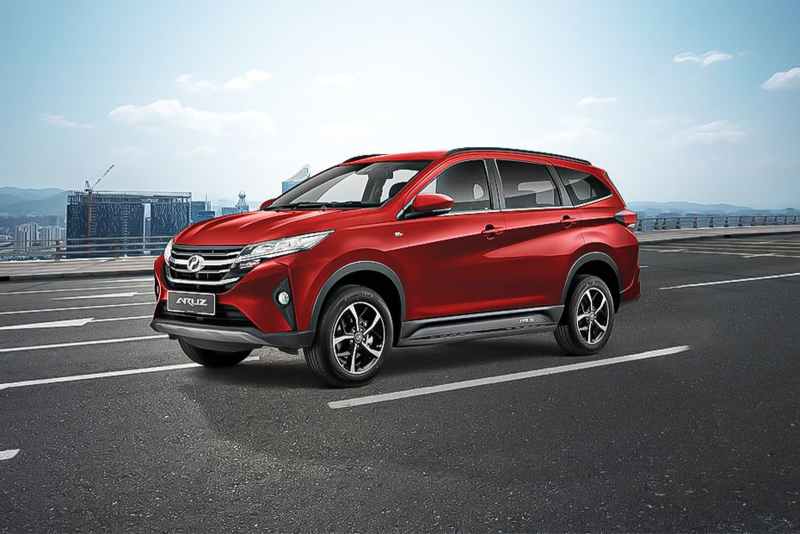
Perodua Aruz Review: A Practical and Safe SUV That Won’t Break the Bank
JamesJul 25, 2025
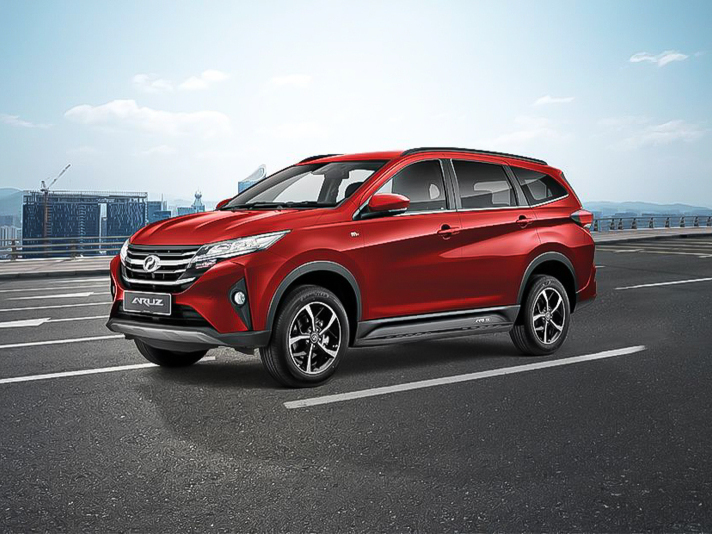
Perodua Aruz Interior Review: A Practical Cabin Despite Basic Materials
JamesJul 23, 2025
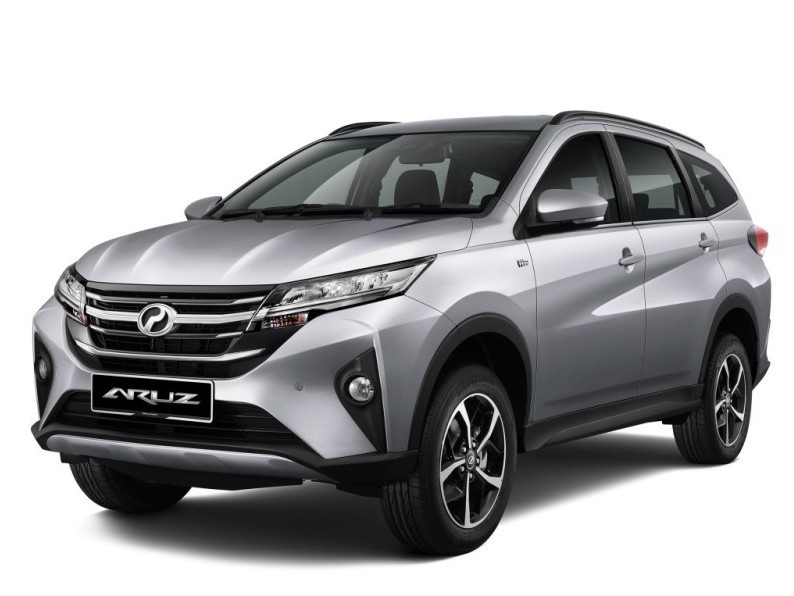
Review: Whether the fashionable exterior and flexible space of Perodua Aruz can become your ideal vehicle?
LienApr 9, 2025
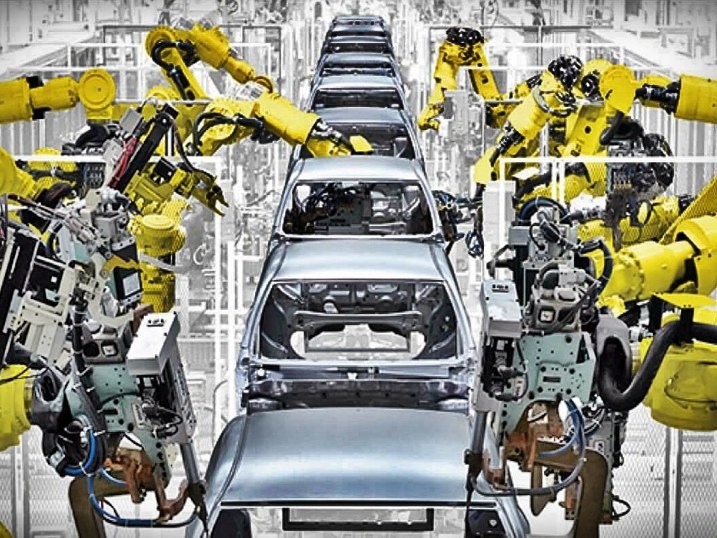
Is Perodua CKD or CBU? How to know if my car is CKD or CBU?
Kevin WongMar 4, 2025
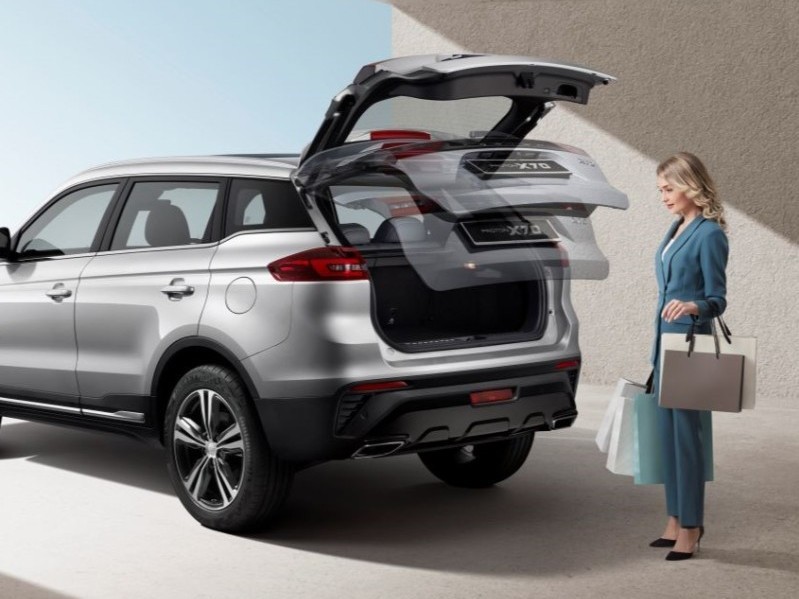
How large is the boot space of the Proton X70? How does it compare with other cars?
MichaelMar 3, 2025
View More












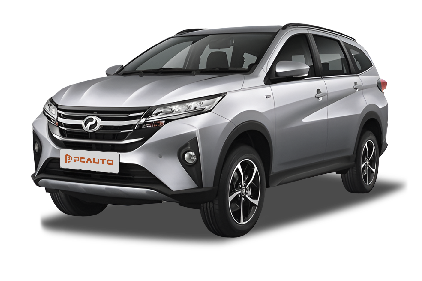





Pros
Cons